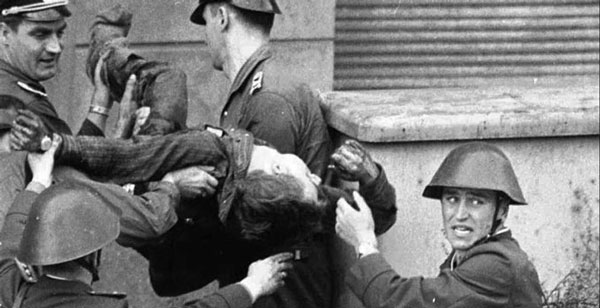On the dead of night of August 13, 1961, the Berlin Wall was erected and became the physical obstruction that divides the West Berlin and East Germany. Its purpose was to keep the East German people from fleeing to the West.
For 28 years, the Berlin Wall was a symbol of the Cold War and the Iron Curtain between Soviet-led Communism and the democracies of the West. When it finally fell on November 9, 1989, it was celebrated not only in Germany but around the world.
West Berlin citizens hold a vigil atop the Berlin Wall in front of the Brandenburg Gate on November 10, 1989, the day after the East German government opened the border between East and West Berlin.
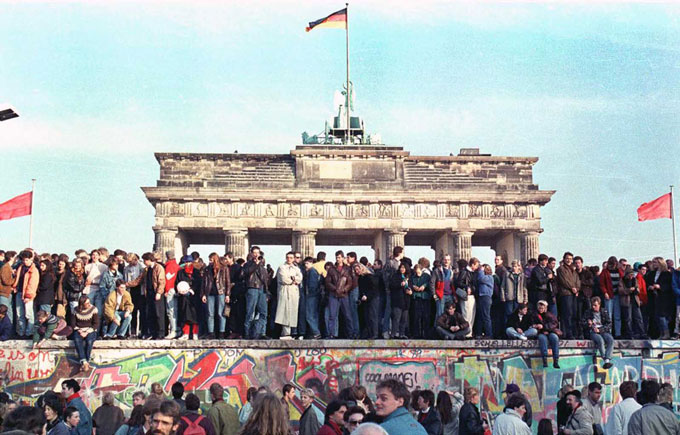
Photo credit: AP / Getty Images/ Text: Jennifer Rosenberg
At the end of World War II, the Allied powers divided the conquered Germany into 4 zones. Each zone was occupied by the United States, Great Britain, France, and the Soviet Union.
The same was done with Germany’s capital city, Berlin.
But the relationship between the Soviet Union and the other Allied powers quickly disintegrated. This resulted to some competition and aggression. This was best demonstrated during the Berlin Blockade in June 1948 in which the Soviet Union stopped all supplies from reaching West Berlin.
This volatile atmosphere turned Germany into West versus East — Democracy versus Communism.
The zone occupied by the Soviet Union formed into East Germany, or the German Democratic Republic (GDR). Since the city of Berlin had been situated entirely within the Soviet Zone of Occupation, West Berlin became an isolated zone of democracy within the Communist East Germany.
On August 13, 1961, East Germany closed its borders with the west. Here, East German soldiers set up barbed wire barricades at the border separating East and West Berlin. West Berlin citizens watch the work.
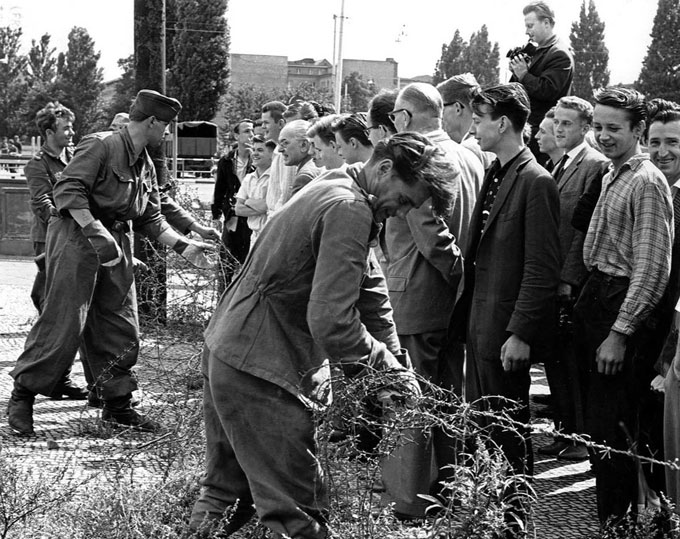
Photo credit: AP / Getty Images/ Text: Jennifer Rosenberg
With the aid of its occupying powers, West Germany turned into a capitalist society. The economy experienced such a rapid growth that it became known as the “economic miracle”. With hard work, individuals living in West Germany were able to live well, buy gadgets and appliances, and travel as they wished.
The opposite was true in East Germany. The Soviet Union had viewed their zone as a spoil of war.
A young East Berliner erects a concrete wall that was later topped by barbed wire at a sector border in the divided city August 18, 1961. East German police stand guard in background as another worker mixed cement.
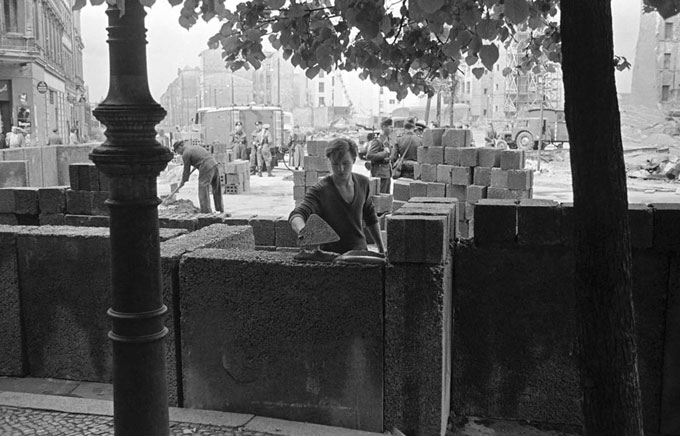
Photo credit: AP / Getty Images/ Text: Jennifer Rosenberg
By late 1950s, many people living in East Germany wanted to flee out of their homes. Living conditions became too repressive for them. But many of them would be stopped on their way out. Still hundreds of thousands made it across the border. By early 1960s, East Germany was rapidly losing its population, especially its labor force.
Between 1949 and 1961, it’s estimated that nearly 2.7 million people fled East Germany.
Desperate to stop this mass exodus, the government decided to take desperate measures. The Soviet Union even threatened the U.S. with the use of nuclear weapons over this issue, but the Western countries were committed to defending West Berlin whatever the cost.
The exodus of East Germans increased. In 1961, nearly 20,000 people fled to the West.
Tracks of the Berlin elevated railroad stop at the border of American sector of Berlin in this air view on August 26, 1961. Beyond the fence, communist-ruled East Berlin side, the tracks have been removed.
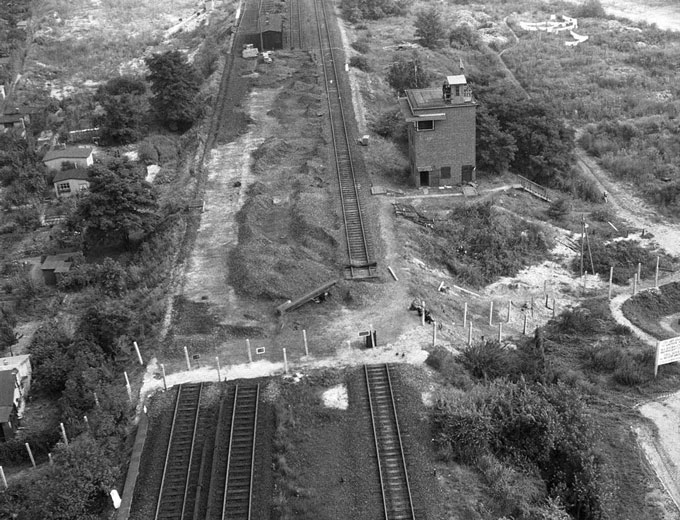
Photo credit: AP / Getty Images/ Text: Jennifer Rosenberg
Just past midnight on the night of August 12–13, 1961, while most Berliners were sleeping, trucks with soldiers and construction workers rumbled through East Berlin. They began tearing up streets, dug holes to put up concrete posts and strung barbed wire all across the border between East and West Berlin. Telephone wires were also cut and railroad lines were blocked. No one expected the speed nor the absoluteness of the rise of the Berlin Wall.
In the morning, Berliners were shocked when they saw the wall dividing the city. Families, friends, and lovers could no longer cross the border to meet their loved ones. Whichever side of the border one went to sleep on during the night of August 12, they were stuck on that side for decades to come.
Formidable concrete walls took shape at the seven crossing points between East and West Berlin on December 4, 1961. The new walls were seven feet high and five feet thick. Only small passages for traffic were left open. In center of the Bornholmer Bridge (French/Russian sector border), behind steel tank traps, a big sign showing the East German emblem hammer and compass.
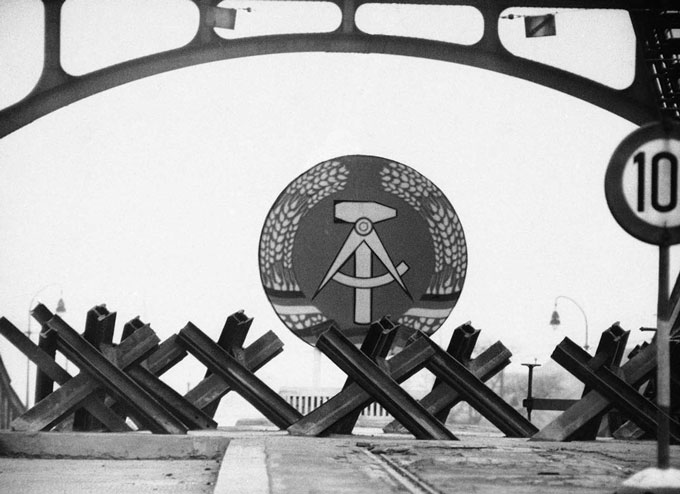
Photo credit: AP / Getty Images/ Text: Jennifer Rosenberg
The length of the Berlin Wall was 91 miles (155 kilometers), snaking through the center of Berlin, and wrapping around West Berlin, cutting off everyone from the rest of East Germany. The divide started out as a barbed-wire fence with concrete posts. But days later, it was quickly replaced with sturdier, more permanent structures, topped with barbed wires.
Soldiers patrolled with dogs and a raked ground showed footprints. The East Germans also installed anti-vehicle trenches, electric fences, massive light systems, 302 watchtowers, 20 bunkers, and even minefields. Over the years, propaganda from the East German government would say that the people of East Germany welcomed the Wall.
East German VOPO, a quasi-military border policeman using binoculars, standing guard on one of the bridges linking East and West Berlin, in 1961.
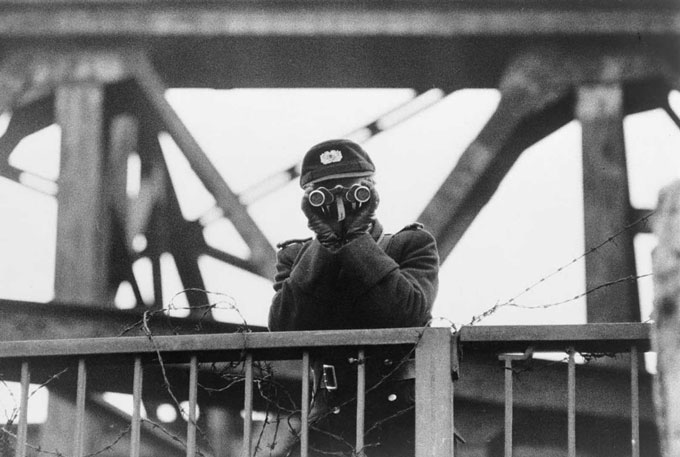
Photo credit: AP / Getty Images/ Text: Jennifer Rosenberg
Checkpoint Charlie was the main access point for Allied personnel and Westerners who want to cross the border. Soon after the Berlin Wall was built, Checkpoint Charlie became an icon of the Cold War, frequently featured in movies during this time period.
Under the eye of a communist “people’s policeman”, East Berlin workers with a power shovel destroy one of a number of cottages and one-family houses along a sparsely settled stretch of the east-west Berlin boundary in October of 1961.
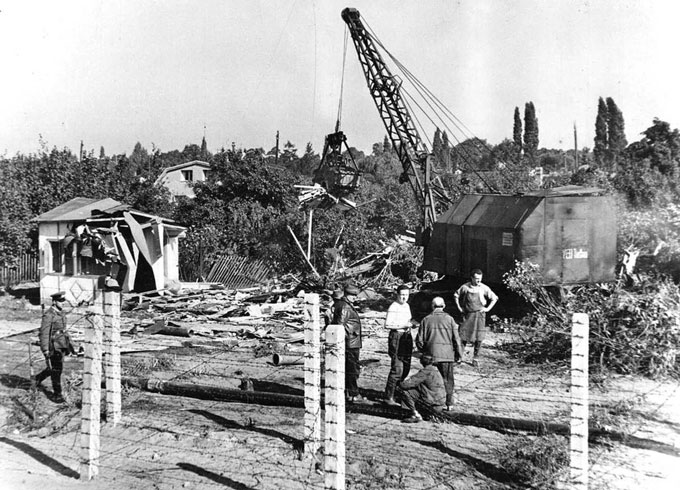
Photo credit: AP / Getty Images/ Text: Jennifer Rosenberg
The Berlin Wall prevented East Germans from emigrating to the West, but it did not deter everyone. Some early successful attempts were simple, like throwing a rope over the Berlin Wall and climbing up. Others were brash, like ramming a truck or bus into the Berlin Wall and making a run for it. Still, others were suicidal as some people jumped from the upper-story windows of apartment buildings that bordered the Berlin Wall.
As the Berlin Wall became stronger, larger and more dangerous, the escape attempts became more elaborately planned. Some people dug tunnels from the basements of buildings in East Berlin, under the Berlin Wall, and into West Berlin. Another group saved scraps of cloth and built a hot air balloon and flew over the Wall.
But not all escape attempts were successful. Since the East German guards were allowed to shoot anyone nearing the eastern side without warning, there was always a chance of death in any and all escape plots. Between 192 and 239 people died at the Berlin Wall.
A young girl in the Eastern Sector looks through barbed wire into Steinstucken, Berlin, in October of 1961.
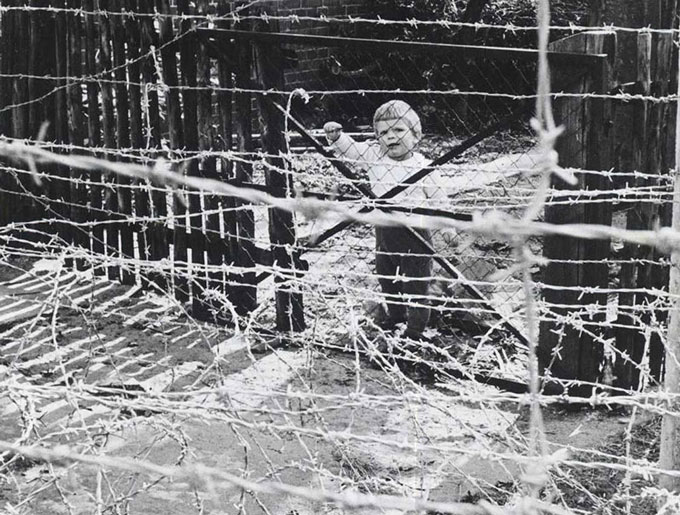
Photo credit: AP / Getty Images/ Text: Jennifer Rosenberg
In the early afternoon in 1962, two 18-year-old men ran toward the Wall with the intention of scaling it. The first of the young men to reach it was successful. The second one, Peter Fechter, was not. As he was about to scale the Wall, a border guard opened fire. Fechter was hit and tumbled back onto the East German side. To the shock of the world, Fechter was just left there. No East German guards came to his aid as he lied there dying.
Fechter became the 50th person to die at the Berlin Wall — a symbol of the struggle for freedom.
Blocking the church – Two East Germans work on a huge 15 foot wall, placing pieces of broken glass on the top to prevent East Berliners from escaping.
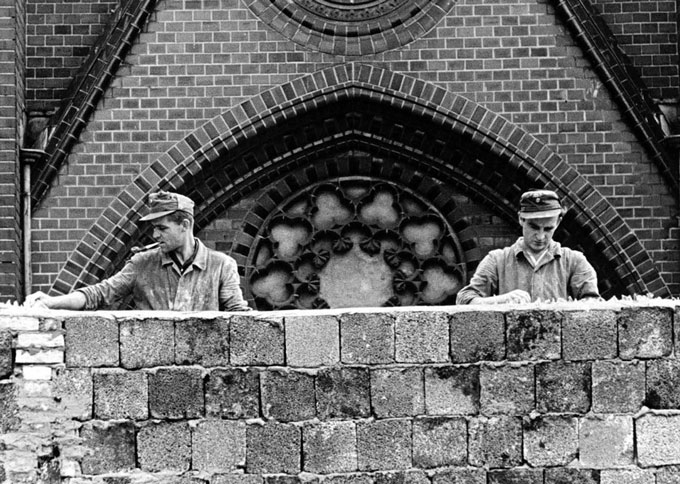
Photo credit: AP / Getty Images/ Text: Jennifer Rosenberg
The fall of the Berlin Wall occurred as suddenly as its rise. As Communism began to falter in Poland, Hungary, and Czechoslovakia in 1988 and 1989, new exodus points were opened to East Germans who wanted to flee to the West.
A refugee runs during an attempt to escape from the East German part of Berlin to West Berlin by climbing over the Berlin Wall on October 16, 1961.
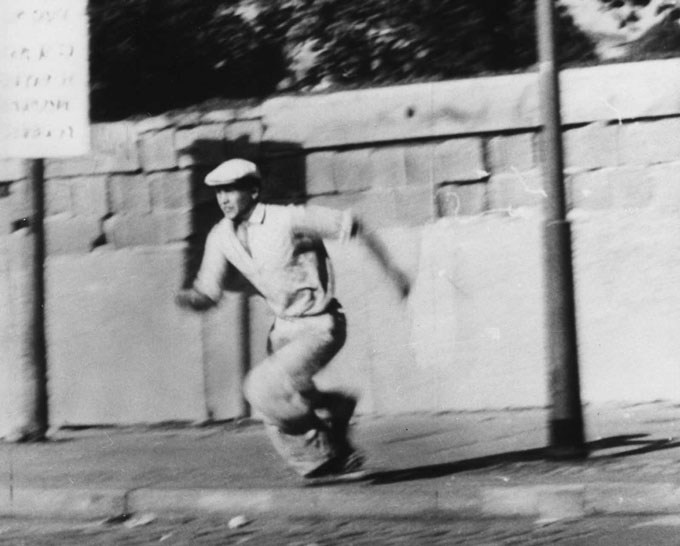
Photo credit: AP / Getty Images/ Text: Jennifer Rosenberg
On the evening of November 9, 1989, East German government official Günter Schabowski blundered by stating in an announcement, “Permanent relocations can be done through all border checkpoints between the GDR [East Germany] into the FRG [West Germany] or West Berlin”. People were in shock. East Germans hesitatingly approached the border and indeed found that the border guards were letting people cross.
Like an avalanche, the Berlin Wall was swarmed in with people from both sides of the wall. One person started chipping at the Berlin Wall with a hammer. More and more people followed hammering and chiseling the wall. There was an impromptu and massive celebration along the Berlin Wall, with people hugging, kissing, singing, cheering, and crying.
After the Berlin Wall came down, East and West Germany reunified into a single German state on October 3, 1990.
Picture taken in June 1968 of the Berlin Wall and East Berlin (Soviet sector).
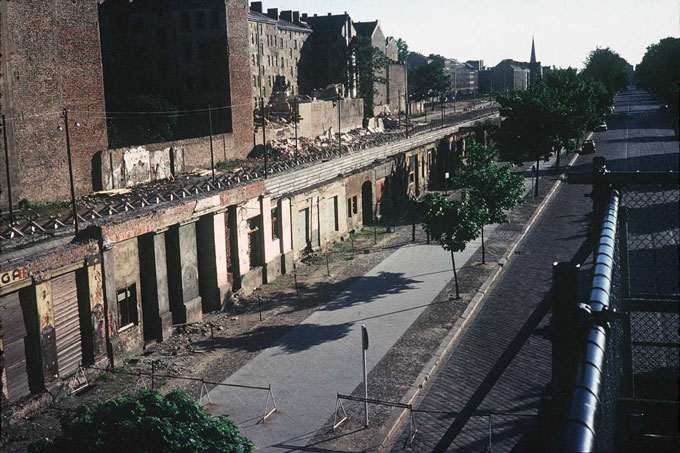
Photo credit: AP / Getty Images/ Text: Jennifer Rosenberg
Typical of East Berlin measures to halt the escape of refugees to the west are these bricked-up windows in an apartment house along the city’s dividing line October 6, 1961. The house, on the South side of Bernauerstrasse, is in East Berlin.
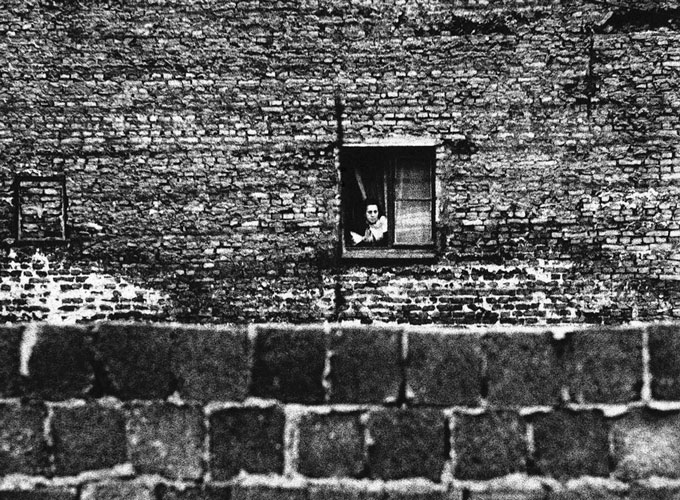
Photo credit: AP / Getty Images/ Text: Jennifer Rosenberg
Aerial view of Berlin border wall, seen in this 1978 picture.
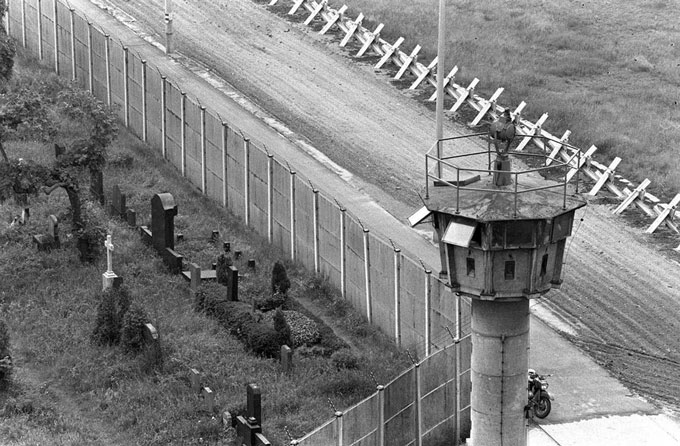
Photo credit: AP / Getty Images/ Text: Jennifer Rosenberg
East German border guards carry away a refugee who was wounded by East German machine gun fire as he dashed through communist border installations toward the Berlin Wall in 1971.
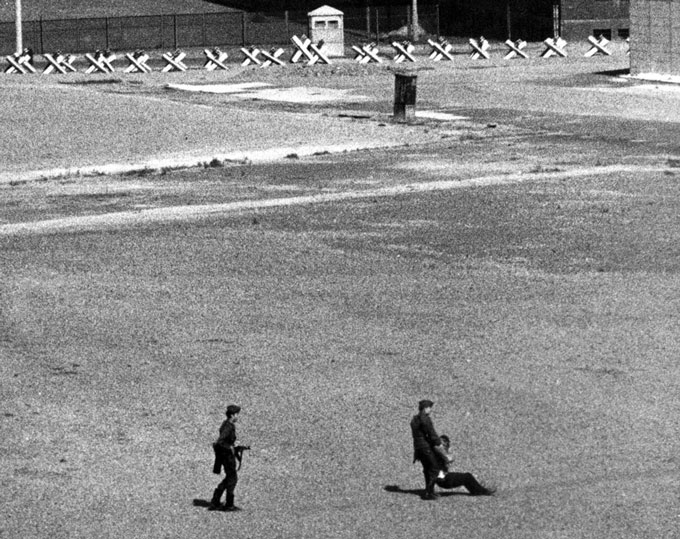
Photo credit: AP / Getty Images/ Text: Jennifer Rosenberg
East Berlin laborers work on “Death Strip” which communist authorities created on their side of the border in the divided city on October 1, 1961. A double barbed wire fence marks the border, with West Berlin at right. In this view of the area laborers level rubble of houses which, just days before, stood on the site close to the border. Buildings along the 25-mile dividing line were evacuated and razed by Berlin reds to eliminate one means of escape used by East Berliners to jump to the west.
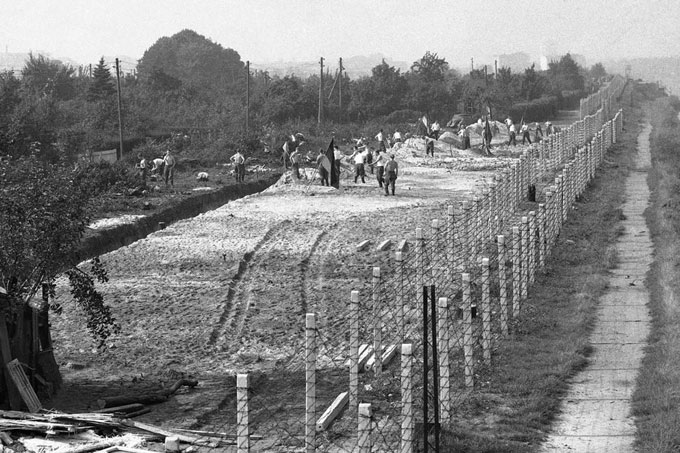
Photo credit: AP / Getty Images/ Text: Jennifer Rosenberg
Dying Peter Fechter is carried away by East German border guards who shot him down when he tried to flee to the west in this August 17, 1962 photo. Fechter was lying 50 minutes in no-man’s land before he was taken to a hospital where he died shortly after arrival.
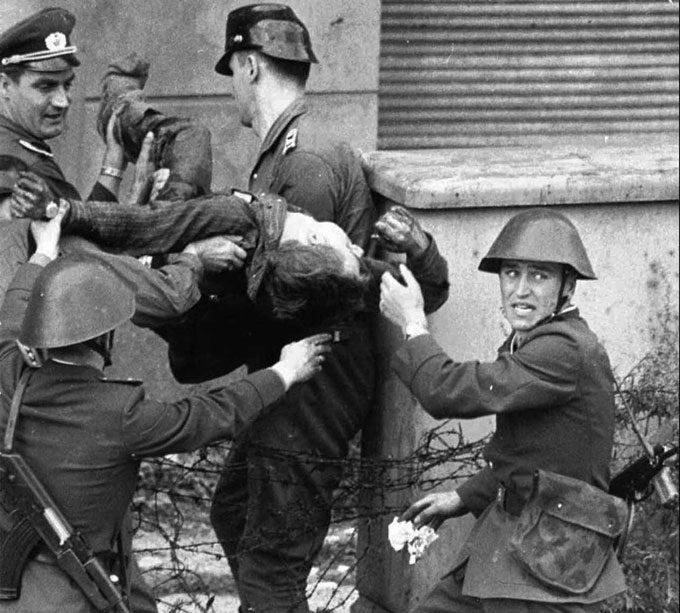
Photo credit: AP / Getty Images/ Text: Jennifer Rosenberg
View from top of the old Reichstag building of the Brandenburg Gate, which marks the border in this divided city. The semi-circled wall around the Brandenburg Gate was erected by East German Vopos on November 19, 1961.
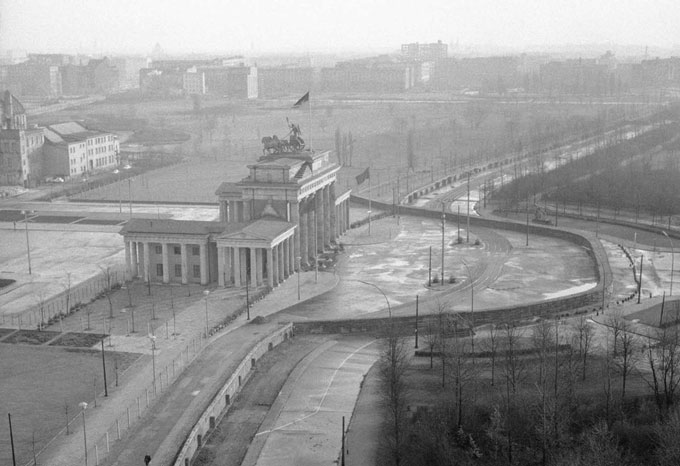
Photo credit: AP / Getty Images/ Text: Jennifer Rosenberg
The Brandenburg Gate is shrouded in fog as a man looks from a watchtower over the Wall to the Eastern part of the divided city on November 25, 1961. The tower was erected by the West German police to observe the Inner-German border.
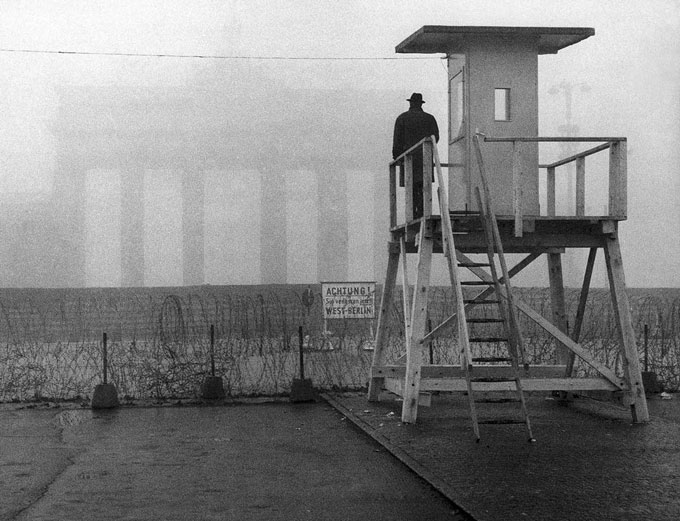
Photo credit: AP / Getty Images/ Text: Jennifer Rosenberg
East German border guard Conrad Schumann leaps into the French Sector of West Berlin over barbed wire on August 15, 1961
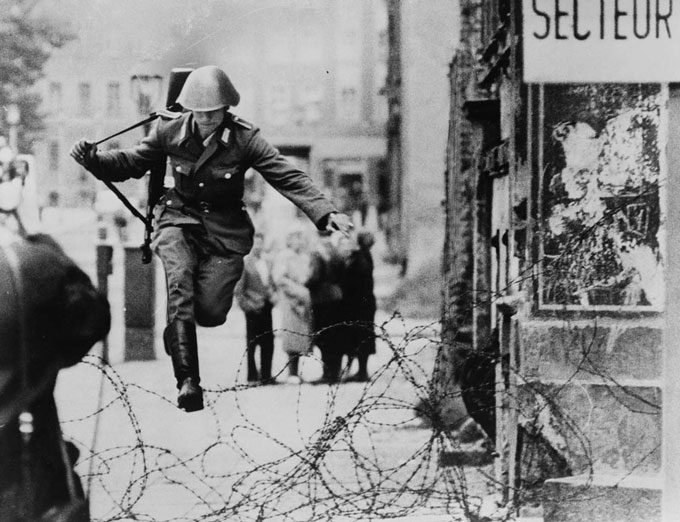
Photo credit: AP / Getty Images/ Text: Jennifer Rosenberg
West German construction workers have a chat in West Berlin, April 18, 1967 beside the wall separating the city.
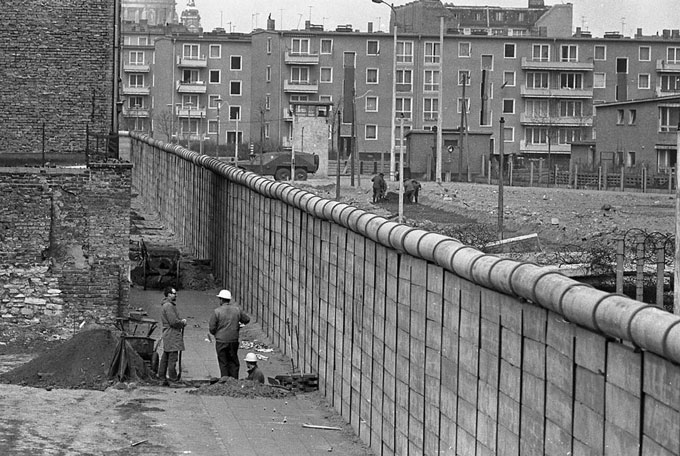
Photo credit: AP / Getty Images/ Text: Jennifer Rosenberg
East German border guards carry away a 50 year old refugee, who was shot three times by East German border police on September 4, 1962, as he dashed through communist border installations and tried to climb the Berlin wall in the cemetery of the Sophien Church.
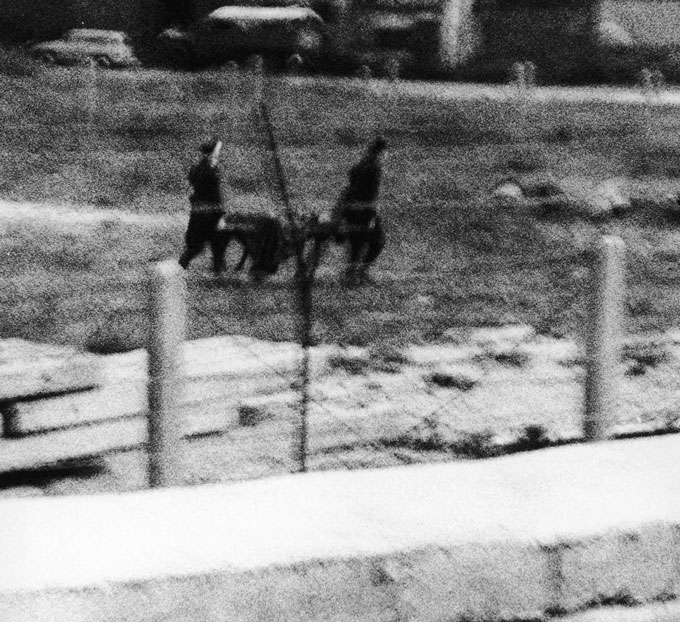
Photo credit: AP / Getty Images/ Text: Jennifer Rosenberg
A woman and child walk beside a section of the Berlin Wall.
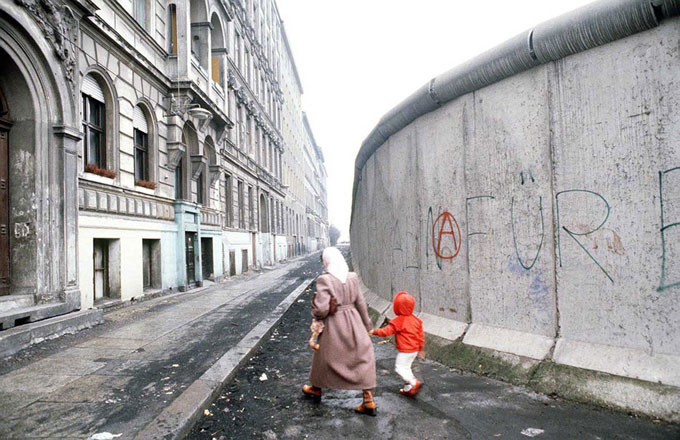
Photo credit: AP / Getty Images/ Text: Jennifer Rosenberg
Reverend Martin Luther King, American civil rights leader, invited to Berlin by West Berlin Mayor Willy Brandt, visits the wall on September 13, 1964, at the border Potsdamer Platz in West Berlin.
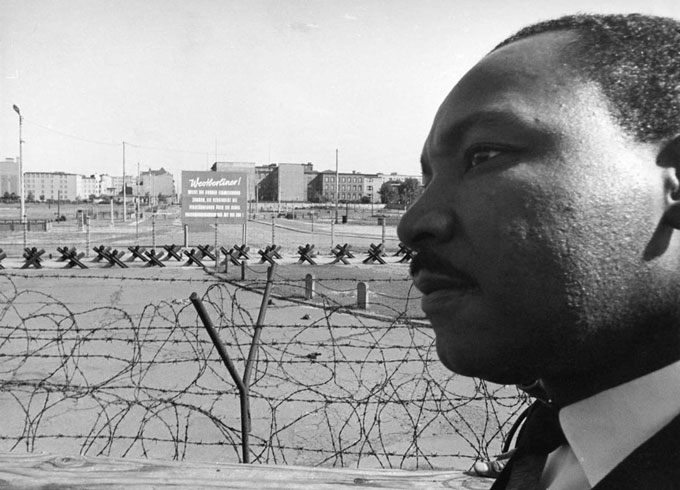
Photo credit: AP / Getty Images/ Text: Jennifer Rosenberg
A mass escape of 57 people in October 1964 from East Berlin through a tunnel to the cellar of a former bakery in “Bernauer Street”, West Berlin. Picture of the tunnel exit.
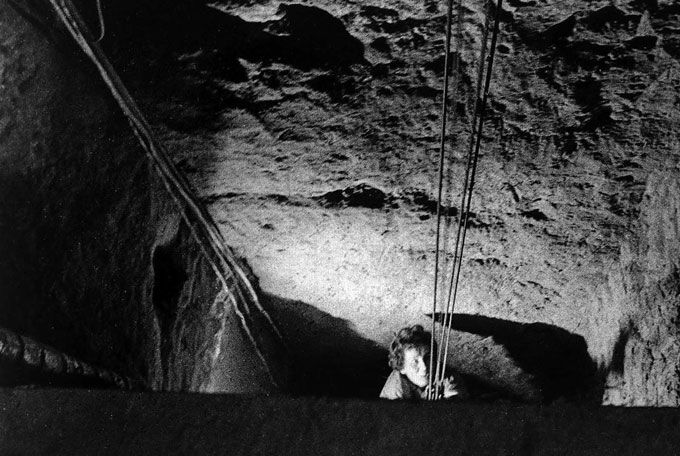
Photo credit: AP / Getty Images/ Text: Jennifer Rosenberg
A graffiti-covered section of the wall close to the Brandenburg Gate in Berlin in 1988. Sign reads: “Attention! You are now leaving West Berlin”
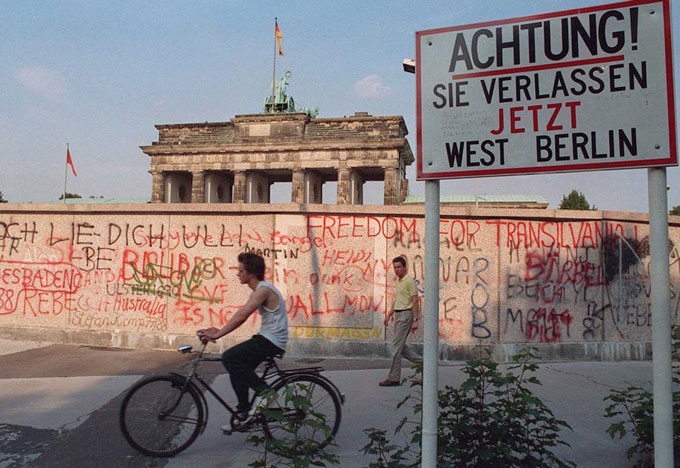
Photo credit: AP / Getty Images/ Text: Jennifer Rosenberg
Two East Berliners jump across border barriers on the Eastern side of border checkpoint at Chaussee Street in Berlin in April of 1989. They were stopped by gun wielding East German border guards and arrested while trying to escape into West Berlin. People in the foreground, still in East Berlin, wait for permits to visit the West.
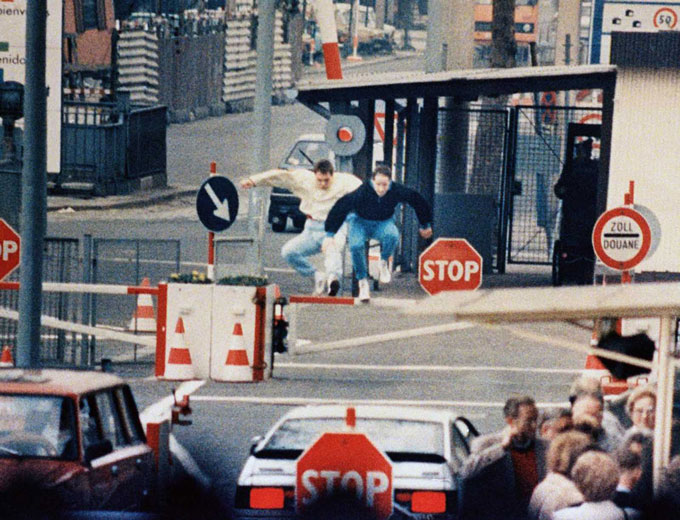
Photo credit: AP / Getty Images/ Text: Jennifer Rosenberg
Two East Berlin refugees are taken away by border guards after a thwarted escape attempt at Berlin border crossing Chausseestreet, in this April 1989 picture.
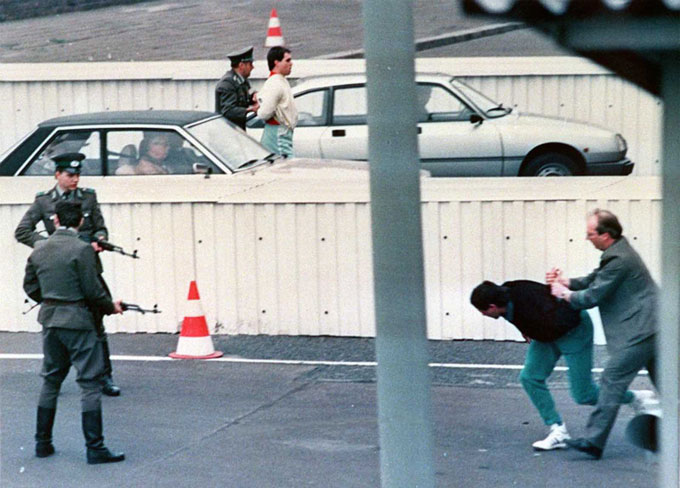
Photo credit: AP / Getty Images/ Text: Jennifer Rosenberg
An East Berlin border guard, cigarette in mouth, points his pistol to the scene where two East Germans were led away after failing to escape to the west at Berlin border crossing Chausseestrasse. Eyewitnesses reported the guard also fired shots.
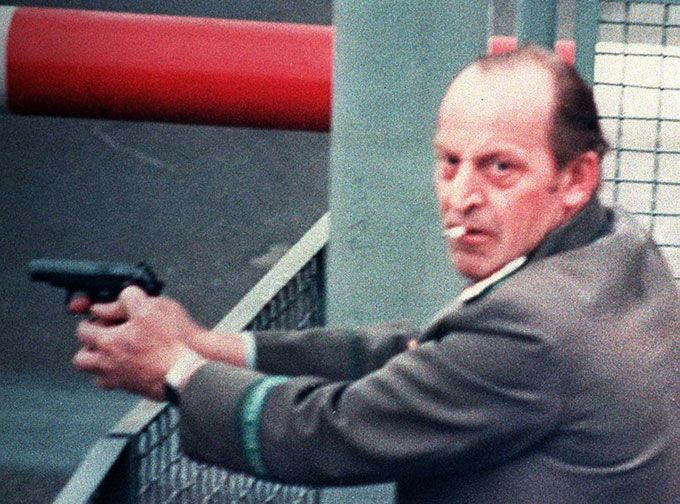
Photo credit: AP / Getty Images/ Text: Jennifer Rosenberg
A general view of the overcrowded East Berlin Gethsemane Church on October 12, 1989. About 1,000 East Germans took part in a prayer service here for imprisoned pro-democracy protesters. The church was the focus of protests in the final days of the wall.
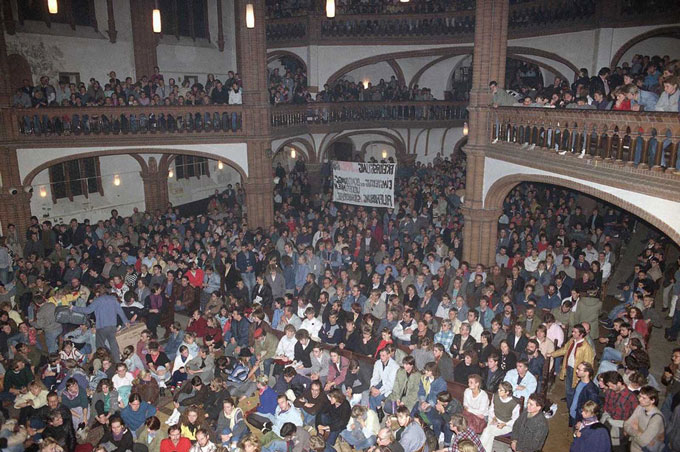
Photo credit: AP / Getty Images/ Text: Jennifer Rosenberg
An unidentified East German border guard gestures toward some demonstrators, who threw bottles on the eastern side of newly-erected barriers at the Checkpoint Charlie crossing point on October 7, 1989.
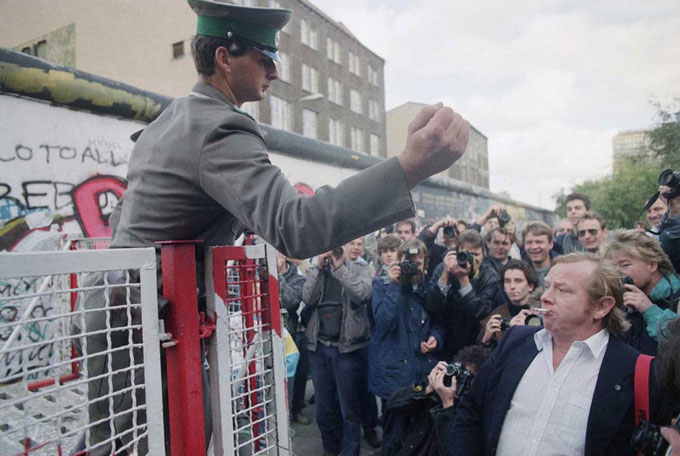
Photo credit: AP / Getty Images/ Text: Jennifer Rosenberg
East and West Berliners mingle as they celebrate in front of a control station on East Berlin territory, on November 10, 1989, during the opening of the borders to the West following the announcement by the East German government that the border to the West would be open.
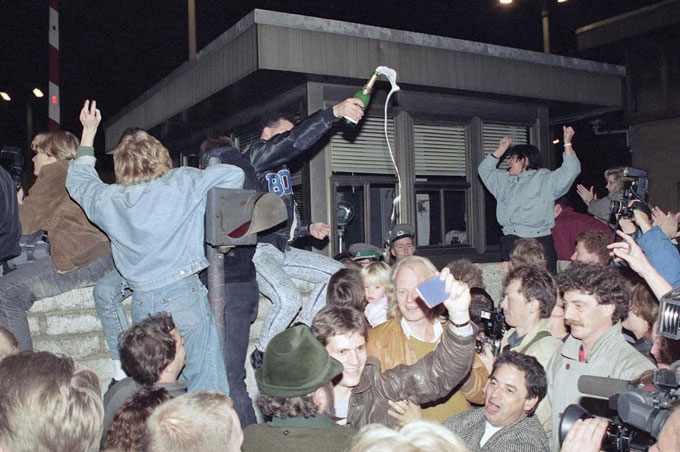
Photo credit: AP / Getty Images/ Text: Jennifer Rosenberg
East Berliners get helping hands from West Berliners as they climb the Berlin Wall which divided the city for decades, near the Brandenburger Tor (Brandenburg Gate) on November 10, 1989.
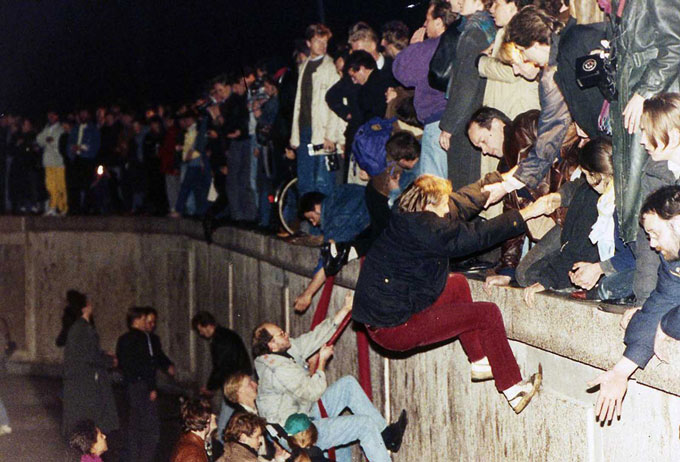
Photo credit: AP / Getty Images/ Text: Jennifer Rosenberg
A man hammers away at the Berlin Wall on November 12, 1989 as the border barrier between East and West Germany was torn down.
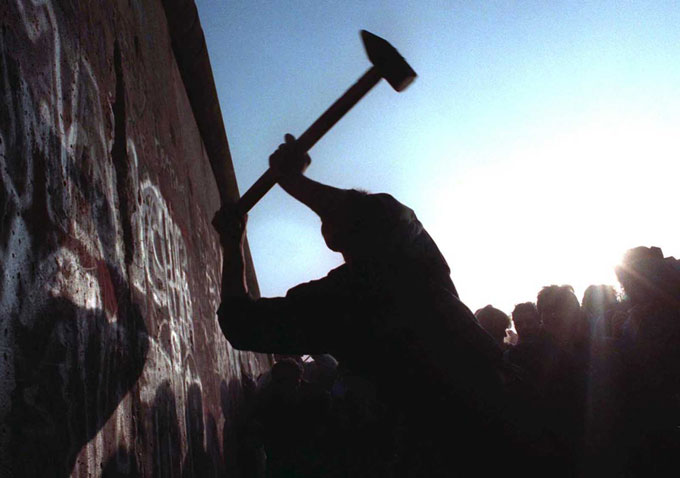
Photo credit: AP / Getty Images/ Text: Jennifer Rosenberg
West Berliners crowd in front of the Berlin Wall early November 11, 1989 as they watch East German border guards demolishing a section of the wall in order to open a new crossing point between East and West Berlin, near the Potsdamer Square.
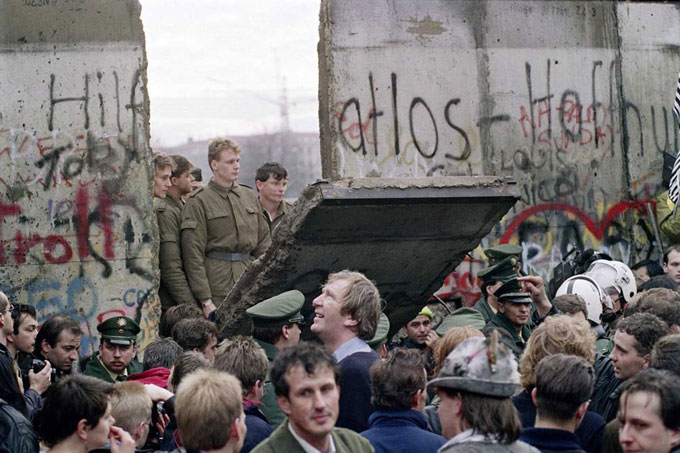
Photo credit: AP / Getty Images/ Text: Jennifer Rosenberg
East and West German Police try to contain the crowd of East Berliners flowing through the recent opening made in the Berlin wall at Potsdamer Square, on November 12, 1989.
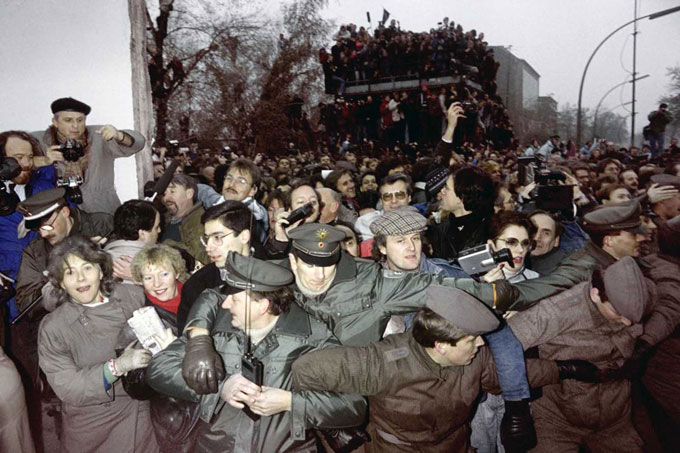
Photo credit: AP / Getty Images/ Text: Jennifer Rosenberg
Decades later, the Berlin Wall is a memory, pieces of it scattered around the world. Here, some original pieces of the wall are displayed for sale at the city of Teltow near Berlin, on November 8, 2013
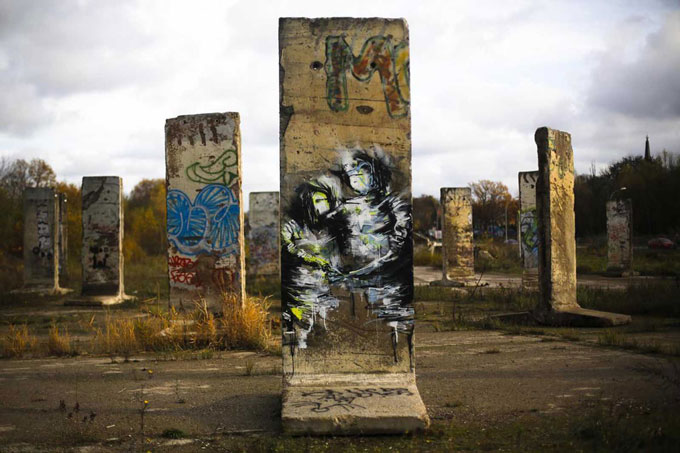
Photo credit: AP / Getty Images/ Text: Jennifer Rosenberg

